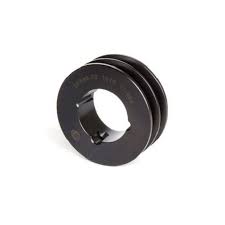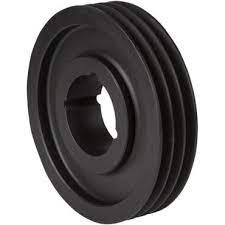Product Description
Brand: E&B HUIXIN
| Place of Origin: | HangZhou HangZhou (Mainland) | ||||||||||||||
| Model: | MXL XL L H XH XXH T2.5 T5 T10 T20 AT5 AT10 AT20 3M 5M 8M 14M 20M S2M S3M S4.5M S5M S8M S14M P5M P8M P14M etc and other special models | ||||||||||||||
| Material: | Stainless Steel, Brass/Copper, Aluminum, POM, and other standard machineable material. | ||||||||||||||
| Module: | 7-160mm, Max.Diameter:14 Mobile: 155718571 http://cxhxbelt
How do spa pulleys contribute to the functioning of spa heater and filtration systems?Spa pulleys play a significant role in the functioning of spa heater and filtration systems. Here’s a detailed explanation of how spa pulleys contribute to these systems: 1. Spa Heater System: Spa pulleys are involved in the operation of the spa heater system, which is responsible for maintaining the desired water temperature. The heater system typically includes a circulation pump that moves water through the heater element. The pump is driven by a motor connected to pulleys and belts or cables. The pulleys transmit power from the motor to the pump, ensuring water flow through the heater system. Properly sized and aligned pulleys help maintain the appropriate speed and torque required for efficient water circulation. When the pulleys are correctly configured, they ensure that the pump operates at the optimal speed, allowing sufficient time for water to pass through the heater element and reach the desired temperature. This enables the heater system to effectively heat the water in the spa, providing a comfortable and enjoyable spa experience for users. 2. Spa Filtration System: The spa filtration system is responsible for removing debris, particles, and contaminants from the spa water, promoting clean and clear water. Spa pulleys contribute to the functioning of the filtration system by powering the circulation pump that drives water through the filter media. Similar to the spa heater system, the circulation pump is driven by a motor connected to pulleys and belts or cables. The pulleys transmit power from the motor to the pump, ensuring sufficient water flow through the filtration system. Proper alignment and tensioning of the pulleys help maintain consistent water flow, ensuring that water passes through the filter media effectively. Effective power transmission through the pulleys allows the filtration system to efficiently capture and trap debris and contaminants, preventing them from re-entering the spa water. This contributes to improved water quality, reducing the risk of cloudy water or waterborne illnesses. Additionally, proper pulley alignment and tensioning minimize the risk of clogs or reduced filtration efficiency, ensuring continuous and effective filtration. In summary, spa pulleys are essential for the functioning of spa heater and filtration systems. They enable the circulation pump to operate, facilitating water flow through the heater system for temperature regulation and through the filtration system for debris and contaminant removal. Proper alignment and tensioning of spa pulleys ensure optimal power transmission, allowing the systems to function efficiently and effectively. This helps maintain comfortable water temperature and promotes clean and clear spa water for an enjoyable and hygienic spa experience. Can spa pulleys withstand exposure to moisture and chemicals used in spas?Spa pulleys are designed to withstand exposure to moisture and chemicals commonly used in spas. Here’s a detailed explanation: 1. Moisture Resistance: Spa pulleys are typically constructed using materials that are resistant to moisture. Common materials used for spa pulleys include corrosion-resistant metals such as stainless steel or aluminum, as well as various types of plastics or polymers. These materials have inherent resistance to moisture and are less prone to rust or degradation when exposed to water or high humidity levels in the spa environment. 2. Chemical Compatibility: Spas often use a variety of chemicals, such as sanitizers, pH adjusters, and water clarifiers, to maintain water quality. Spa pulleys are designed to withstand exposure to these chemicals without experiencing significant degradation or damage. The materials selected for spa pulleys are chosen for their chemical resistance properties. They are tested and chosen to ensure compatibility with the specific chemicals used in spas, reducing the risk of chemical-induced deterioration or failure. 3. Sealed and Protected Design: Spa pulleys may incorporate design features that provide additional protection against moisture and chemical exposure. For example, pulleys may have sealed bearings or sealed housings to prevent water or chemicals from directly accessing critical components. This helps to prolong the lifespan of the pulleys and maintain their performance even in the presence of moisture or chemicals. 4. Regular Maintenance: While spa pulleys are designed to withstand exposure to moisture and chemicals, regular maintenance is still necessary to ensure their longevity. This includes proper cleaning, inspection, and lubrication of the pulleys. Cleaning helps remove any accumulated debris or chemical residues that may affect the pulley’s performance. Regular inspection allows for early detection of any signs of wear or damage, enabling timely maintenance or replacement. Lubrication helps to reduce friction and wear, improving the overall performance and lifespan of the pulleys. 5. Manufacturer Recommendations: It’s important to follow the manufacturer’s recommendations regarding the use and maintenance of spa pulleys. Manufacturers often provide specific guidelines on the materials used, maintenance procedures, and any limitations or precautions related to moisture and chemical exposure. Adhering to these recommendations ensures the pulleys perform optimally and withstand the spa environment effectively. In summary, spa pulleys are designed to withstand exposure to moisture and chemicals used in spas. They are constructed using materials that are resistant to moisture and compatible with the chemicals commonly found in spas. Additionally, their design may incorporate features that provide extra protection against moisture and chemical exposure. Regular maintenance and following manufacturer recommendations are essential to ensure the longevity and reliable performance of spa pulleys in the spa environment. What is a spa pulley, and how is it used in spa and hot tub systems?A spa pulley is a component used in spa and hot tub systems to facilitate the movement and operation of various parts and functions. Here’s a detailed explanation of spa pulleys and their role in spa and hot tub systems: A spa pulley is a wheel or disk-shaped component typically made of durable materials such as plastic or metal. It features a grooved or toothed surface designed to accommodate a specific type of belt, such as a V-belt or a timing belt. The belt wraps around the pulley, creating a connection between the motor or drive source and other components within the spa or hot tub system. Spa pulleys are used in several key areas of a spa or hot tub system, including: 1. Pump Systems: In spa and hot tub systems, pumps are responsible for circulating water, powering jets, and maintaining filtration. Spa pulleys are commonly used in pump systems to transfer the rotational power from the motor to the pump impeller. The pulley is connected to the motor shaft, and its rotation drives the pump impeller, creating water movement and pressure. 2. Blower Systems: Blowers are often found in spa and hot tub systems to provide air for air jets, enhancing the hydrotherapy experience. Spa pulleys can be used to connect the blower motor to the blower fan. As the motor rotates, it drives the pulley, which, in turn, spins the blower fan, creating a flow of air into the air jets. 3. Control Systems: Some spa and hot tub systems feature control panels or electronic systems that govern various functions, such as temperature control, lighting, or water feature activation. Spa pulleys may be utilized in these control systems to transfer rotational power from the motor or drive source to the components responsible for controlling these functions. This allows for the activation and adjustment of various features within the spa or hot tub. 4. Other Components: Spa pulleys can also be found in other areas of spa and hot tub systems, depending on the specific design and configuration. They may be used in systems involving ozonators, waterfalls, or other accessories that require rotational power transfer from a motor or drive source. Spa pulleys play a crucial role in ensuring the proper functioning of various components within a spa or hot tub system. They enable the transfer of rotational power from the motor to drive pumps, blowers, control systems, and other components, creating the desired water flow, pressure, and functionality. It’s important to note that the specific type, size, and design of the spa pulley may vary depending on the manufacturer and the particular spa or hot tub system. It’s recommended to consult the system’s documentation or contact the manufacturer for accurate information on the proper selection, installation, and maintenance of spa pulleys.
2023-10-20 |





